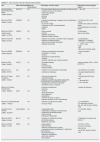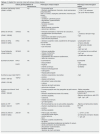Hyperimmunoglobulinemia E and hereditary immune deficiencies
- PMID: 38477192
- PMCID: PMC11390010
Hyperimmunoglobulinemia E and hereditary immune deficiencies
Abstract
The detection of a high serum immunoglobulin E (IgE) level is first suggestive of allergy, atopy or parasitosis. However, some very high values can be a sign of more severe diseases. We propose a diagnostic strategy based on clinical and biological data to identify the various hereditary immune diseases that also present with abnormally high serum IgE levels.
La détection d’un taux élevé des immunoglobulines E (IgE) sériques est d’abord évocatrice d’allergie, d’atopie ou de parasitose. Cependant, certaines valeurs très élevées peuvent être le signe de maladies plus sévères. Nous proposons une stratégie diagnostique basée sur des données cliniques et biologiques pour identifier les différentes maladies héréditaires de l’immunité qui présentent également des niveaux d’IgE sériques anormalement élevés.
References
-
- Ishizaka K, Ishizaka T. Identification of IgE. Journal of Allergy and Clinical Immunology. 2016 Jun;137(6):1646–1650. - PubMed
-
- Johansson SGO. The discovery of IgE. Journal of Allergy and Clinical Immunology. 2016 Jun;137(6):1671–1673. - PubMed
-
- Lindberg R, Arroyave C. Levels of IgE in serum from normal children and allergic children as measured by an enzyme immunoassay. Journal of Allergy and Clinical Immunology. 1986 Oct;78(4):614–618. - PubMed
-
- Saarinen UM, Juntunen K, Kajosaari M, Björkstén F. SERUM IMMUNOGLOBULIN E IN ATOPIC AND NON-ATOPIC CHILDREN AGED 6 MONTHS TO 5 YEARS.: A Follow-up Study. Acta Paediatrica. 1982 May;71(3):489–494. - PubMed
Publication types
MeSH terms
Substances
LinkOut - more resources
Full Text Sources
Medical



